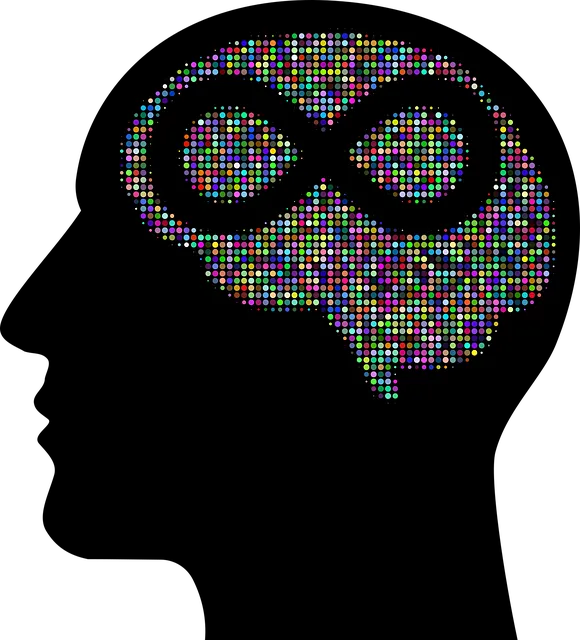In today's fast-paced world, mental wellness apps are gaining popularity due to the global health crisis, offering services from anxiety relief to mental health education. The growing demand for these solutions is reflected in the increasing use of resources like the Parker Kaiser Permanente behavioral health phone number. These apps provide personalized dashboards for tracking mood, anxiety, and sleep; mindfulness guides, stress management workshops, CBT techniques, and access to professional support. A user-centric design approach ensures tailored features addressing individual needs, while integrating evidence-based therapies like CBT empowers users with effective coping strategies. Successful marketing, launch, and post-release support, as seen with the Parker Kaiser Permanente app, are crucial for their success.
In today’s fast-paced world, mental wellness apps have emerged as essential tools to support individual well-being. With a growing awareness of mental health issues, there is a significant demand for accessible and engaging solutions. This article explores the development of such apps, focusing on key strategies like understanding user needs, integrating evidence-based therapies, and ensuring effective design. We also delve into successful marketing and launch strategies using real-world examples, such as the Parker Kaiser Permanente Behavioral Health Phone Number, to highlight best practices for app developers aiming to make a positive impact.
- Understanding the Growing Need for Mental Wellness Apps
- Key Features and Components of Effective Mental Health Apps
- Designing User-Centric Experiences for Enhanced Engagement
- Integrating Evidence-Based Therapies and Tools
- Marketing, Launch, and Post-Release Support for Success: Parker Kaiser Permanente Behavioral Health Phone Number as a Case Study
Understanding the Growing Need for Mental Wellness Apps

In today’s fast-paced world, mental wellness has emerged as a paramount concern for individuals across diverse demographics. The ongoing global health crisis has further highlighted the increasing demand for accessible and convenient solutions to support mental health. This shift is evident in the growing popularity of mental wellness apps, which offer a range of services from anxiety relief techniques to mental health education programs design. These applications cater to a wide spectrum of users, including those seeking stress management tools or struggling with specific conditions like depression or PTSD.
The need for such digital interventions is underscored by institutions like Parker Kaiser Permanente behavioral health phone number, which has witnessed a surge in demand for their services. This trend reflects a broader societal recognition that mental wellness is an integral part of overall well-being and requires ongoing support and care. As a result, developers have the opportunity to create innovative solutions that not only meet this growing need but also foster inclusive communities centered around mental health awareness and empowerment.
Key Features and Components of Effective Mental Health Apps

Effective mental health apps are designed to offer a suite of features that cater to various aspects of an individual’s well-being. Key components include personalized dashboards allowing users to track their mood, anxiety levels, and sleep patterns over time. Integrated tools such as mindfulness meditation guides, stress management workshops, and communication strategies enable users to engage in self-care activities tailored to their specific needs.
Additionally, these apps often incorporate features like cognitive behavioral therapy (CBT) techniques, breathing exercises, and access to professional support through video counseling or chat services. The integration of a Parker Kaiser Permanente behavioral health phone number for urgent assistance adds a layer of security, ensuring users have direct access to expert help when needed. By combining educational content with interactive tools, these apps foster a holistic approach to mental wellness, promoting self-awareness and skill development in managing daily stressors.
Designing User-Centric Experiences for Enhanced Engagement

In the realm of mental wellness app development, designing user-centric experiences is paramount to fostering enhanced engagement and improving outcomes. Apps like those offered by Parker Kaiser Permanente’s behavioral health phone number prioritize intuitive interfaces and personalized features that cater to individual needs. By understanding users’ unique journeys towards mental health awareness and self-esteem improvement, developers can create tools that offer tailored support for managing stress, anxiety, and other emotional challenges. Incorporating interactive elements, such as mindfulness exercises or mood tracking, ensures users remain actively involved in their own emotional regulation.
This user-first approach extends beyond aesthetics to include accessible design considerations. Clear navigation, concise language, and adaptable content ensure that apps cater to diverse audiences, including those with varying levels of digital literacy. Ultimately, by focusing on creating meaningful connections between users and their mental wellness tools, developers can encourage consistent use and promote positive emotional regulation outcomes, making these apps valuable resources in the ongoing pursuit of a healthy mind.
Integrating Evidence-Based Therapies and Tools

Integrating evidence-based therapies and tools is a cornerstone of developing effective mental wellness apps. Applications inspired by leading institutions like Parker Kaiser Permanente’s behavioral health phone number can offer powerful resources for those dealing with various mental illness. By incorporating techniques backed by extensive research, these apps can facilitate significant improvements in user well-being. For instance, Cognitive Behavioral Therapy (CBT), a widely recognized and effective approach, focuses on identifying and changing negative thought patterns to promote positive thinking and inner strength development.
Moreover, integrating tools tailored for stress reduction, mindfulness training, and emotional regulation can complement traditional therapy methods. Such features not only empower users with practical coping strategies but also contribute to broader mental illness stigma reduction efforts by encouraging proactive engagement in one’s behavioral health.
Marketing, Launch, and Post-Release Support for Success: Parker Kaiser Permanente Behavioral Health Phone Number as a Case Study

Marketing, launch, and post-release support are vital components for a successful mental wellness app. Using the Parker Kaiser Permanente Behavioral Health Phone Number as a case study, we can observe a comprehensive approach that includes targeted marketing strategies to reach diverse audiences, especially those within the healthcare provider community. By emphasizing cultural competency training and trauma support services, the app caters to a wide range of users seeking depression prevention resources.
During the launch phase, Parker Kaiser Permanente effectively built anticipation through social media campaigns and partnerships with mental health advocates. Post-release, continuous improvement was ensured through user feedback integration and regular updates that address emerging needs, such as integrating new research on trauma support. This ongoing commitment to quality and relevance has solidified the app’s position as a go-to resource for mental wellness, fostering a positive impact within the healthcare provider landscape.
The development of mental wellness apps has become increasingly vital in addressing the growing need for accessible and personalized mental healthcare solutions. By combining user-centric design, evidence-based therapies, and effective marketing strategies – as exemplified by the success of the Parker Kaiser Permanente Behavioral Health Phone Number – these apps can significantly enhance mental well-being. Incorporating key features like tailored interventions, mood tracking, and supportive communities ensures engagement and positive outcomes. As the digital landscape continues to evolve, developers have a unique opportunity to revolutionize mental healthcare delivery, making it more inclusive and effective for individuals seeking support.






